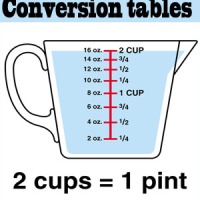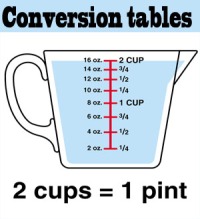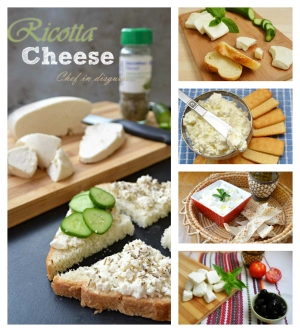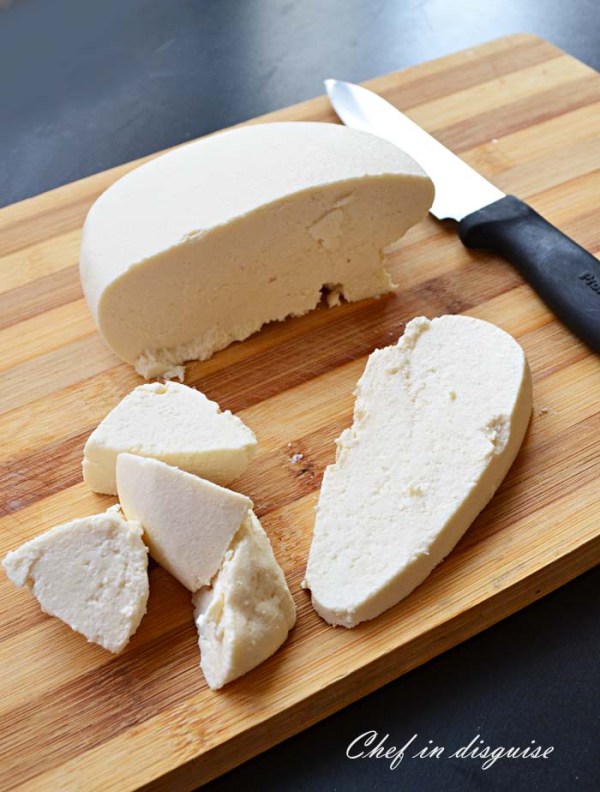
So you want to make cheese at home? let me tell you, are in for a wonderful adventure! but before you take on the challenge of making your own cheese, there are a few things you need to know about that will help you through your cheese making adventure
Rennet
An enzyme “rennin” converts milk protein (casein) from a soluble to an insoluble material, causing the milk to gel. It is used in cheese making to separate curds from whey. You can purchase it in liquid or tablet form. You may find liquid rennet easier to measure accurately. 1 teaspoon liquid rennet (20 drops) equals 1 rennet tablet. 1 rennet tablet is generally used for 20 liters of milk (but do check your manufacturer instruction). There are none- animal based rennet that is suitable for vegetarians. You can find rennet in some grocery stores in the aisle with puddings and jello, you may also be able to find it in pharmacies or health food stores . If you can’t find it in any of these places, you can order it online.
Cheese cloth
The purpose of “cheese cloth” is to separate the curd from the whey by allowing the whey to drain while holding the curds and preventing them from passing through. What most people think of as “cheese cloth” :the very wide weave material is often useless for this purpose. If your curd is fine, it passes through. Even if it is large curd, the curd can become enmeshed in the coarse weave. I recommend using either a large plain white cotton handkerchiefs, or white non-terry cotton dish towels. Just ignore what is sold as “cheese cloth…”
Whey or Milk Serum
Whey is the liquid remaining after milk has been curdled and strained. It is a by-product of the manufacture of cheese or casein and has several commercial uses. Sweet whey is manufactured during the making of rennet types of hard cheese like cheddar or Swiss cheese. Acid whey (also known as “sour whey”) is obtained during the making of acid types of cheese such as cottage cheese.
Curds
Curds are a dairy product obtained by curdling (coagulating) milk with rennet or an edible acidic substance such as lemon juice or vinegar, and then draining off the liquid portion. The increased acidity causes the milk proteins (casein) to tangle into solid masses, or curds. The remaining liquid, which contains only whey proteins, is the whey.
It is all about the milk
The most important factor in the success of cheese making is the type of milk you use. Fresh raw milk is the best possible choice for making cheese but you need to be 200% sure that the milk comes from a reliable clean source and that is not easy to come by. If you have access to raw milk and you are not sure about its reliability your next best choice is to pasteurize it at home.(please refer to the additional information on how to pasteurize raw milk and on a list of sources that sell raw and pasteurized milk). If you can’t get raw milk then you have to understand the different treatments the milk that is available at the store goes through and which types work for cheese making and which don’t.
Thermization or heat treatment
: Is heating the milk to a low temperature (145F) and short time (15 seconds), that has the lowest impact on natural bacteria and enzymes in milk and is commonly practiced in Europe
Pasteurization
is the process where milk is heated, under pressure, to 167* for 15 seconds and, in so doing, kills off any harmful bacteria that may have been present in the milk. (this is different from the pasteurization you will do at home)
Ultra-pasteurization
: is a process in which milk is heated to temperatures from 191-212 F for varying times
Ultra High Temperature Sterilization (UHT)
means heating milk up to (280F) for a short time (2 seconds) .This extends the shelf-life to 60 days Ultra Pasteurization and UHT radically alters the protein structure of the milk, and the calcium is chelated so that it is unavailable for coagulation. That results in curds which fall apart when you stir them. This means that ultra pasteurized milk and UHT cannot be used to make most types of cheese (except for labneh and paneer)
So what do I get from all this?
DO NOT USE ULTRA-PASTURIZED MILK OR UHT MILK. Use pasteurized milk or even better, use fresh raw milk if you have access to it.
Calcium chloride
CaCl2 is a salt commonly used in brewing and brining. It is used to mask the effects of the ultra-pasteurization process ( ¼ tsp of calcium chloride (CaCl2) added to 64 oz (2 litres) of milk. Dilute it in 1/4 cup of cool, non-chlorinated water and add it when you start heating your milk) Calcium chloride has a wide range of uses, from medical applications to keeping our paths clear of snow and ice. If you buy some, be sure it’s of a grade fit for human consumption. Buying it from a cheese making site or home brewery supply house should eliminate any concerns you might have. As calcium chloride is dissolved in water, a small amount of heat is released. This is of little concern, especially given the small amounts we’ll be using. Burns can result, however, if the dry crystals are ingested. Please, KEEP CALCIUM CHLORIDE CRYSTALS OUT OF CHILDREN’S REACH AND AWAY FROM PETS.
The salt
Salt enhances flavor, draws out excess moisture and acts as a preservative. Avoid iodized salt, because it can put the brakes on active starter bacteria. Specialty cheese salt is coarser than regular table salt, and is non-iodized.
Ready to make cheese? how about starting with these
Yogurt cheese (labneh):

This type of cheese is called yogurt cheese or Lebanese cream cheese but it is most commonly known as labneh. It is a staple on the middle eastern breakfast menu. It can also be used as a dip. It makes a wonderful spread for sandwiches with a few mint leaves or some pitted olives or better yet with a sprinkle of zaatar. To put it simply labneh is strained yogurt, it is super easy to make and very tasty and the best part is, you can flavor it any way you like. Mint, oregano, sumac, olives, chili flakes..
You can find the recipe for making soft labneh and labneh korat here.
Homemade Feta Cheese

Feta cheese is a type of Greek cheese that is pickled or brined. The brining process gives feta cheese its characteristic salty, tangy flavor and a crumbly consistency. Feta cheese can be served as a table cheese, used in baking savory dishes usually paired with spinach as a filling for pastry or as a stuffing for chicken, or served as an appetizer or in salads
You can find the recipe and step by step instructions to making feta cheese here
Nabulsi Cheese
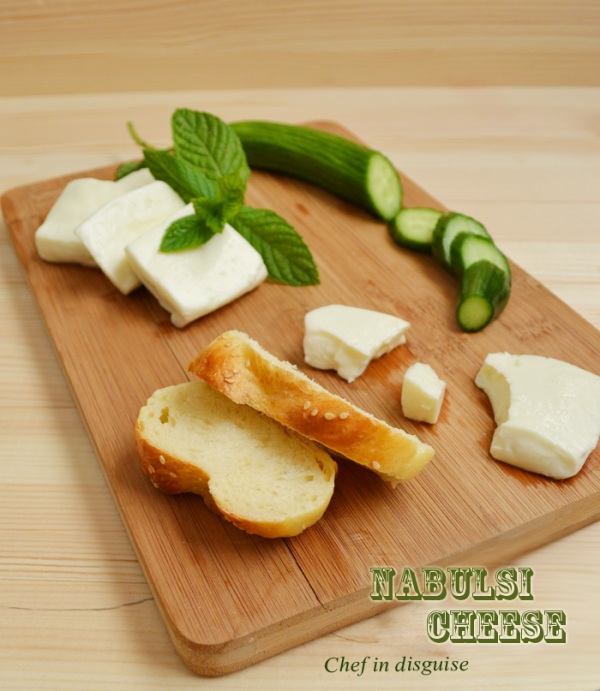
Nabulsi (or naboulsi) cheese is one of the most popular white brined cheeses made in the Middle East. Its name denotes its place of origin, Nablus, Palestine and it is well-known throughout Palestine, Lebanon, Syria and Jordan.Nabulsi cheese is produced primarily from goat milk but sheep’s milk can also be used. Nabulsi cheese is white and rectangular in shape. It is semi-hard with no gas holes. It becomes soft and elastic when heated making it idea for frying or grilling
You can find the recipe and step by step instructions to making nabulsi cheese here
Easy homemade soft cheese

You can find the recipe for easy soft cheese here
Home made ricotta cheese

Homemade Mozzarella cheese
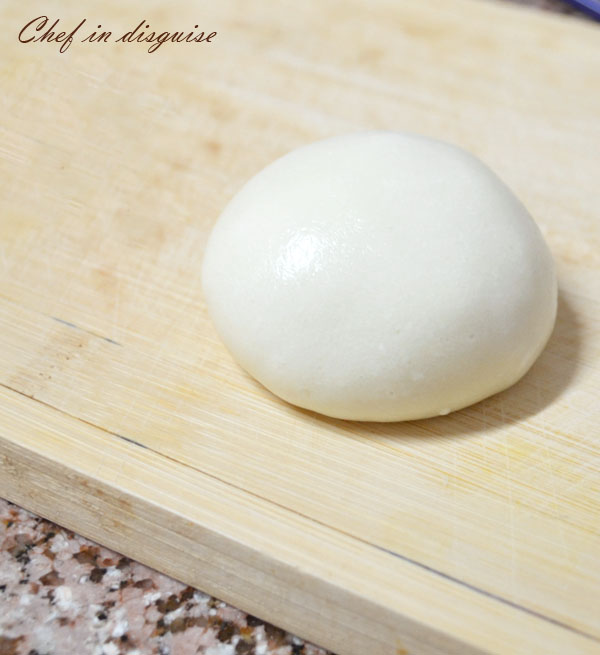
Home made string cheese

For additional information check out:
Cheese making for beginners
http://biology.clc.uc.edu/fankhauser/Cheese/Cheese_course/Cheese_course….
Cheesy stuff (general rules and guidelines to making cheese): http://fromthebartolinikitchens.com/cheesy-stuff/
Cheese making and milk: http://www.cheesemaking.com/store/pg/239-FAQ-Cheesemaking-and-Milk.html
Everything you need to know about cheese making:Fankhauser’s Cheese Page
List of places where you can get raw milk and milk that has been successfully used in cheese making:
http://www.cheesemaking.com/goodmilklist.html
http://www.realmilk.com/where03.html
Places to buy cheese making supplies:
http://www.cheesemaking.com/
http://www.leeners.com/cheese/store/
You can buy rennet online at:
http://www.cheesemaking.com/cheeserennets.html
http://www.amazon.com/s/ref=nb_sb_noss?url=search-alias%3Daps&field-keyw…
http://www.leeners.com/cheese/store/rennet-tablets-microbial.shtml
how to pasteurize raw milk at home: http://www.motherearthnews.com/ask-our-experts/pasteurize-raw-milk-at-ho…
Mascarpone cheese: http://fromthebartolinikitchens.com/2012/03/28/no-baloney-its-mascarpone…
Vegan cheese :
Cashew cheese http://healthyblenderrecipes.com/recipes/raw_vegan_cashew_cheese/
pepper jack cheese http://goodcleanfood.wordpress.com/2012/07/10/vegan-pepper-jack-cashew-c…
Macadamia nut brie http://vedgedout.com/2012/10/31/virtual-vegan-potluck-spooky-vegan-macad…



